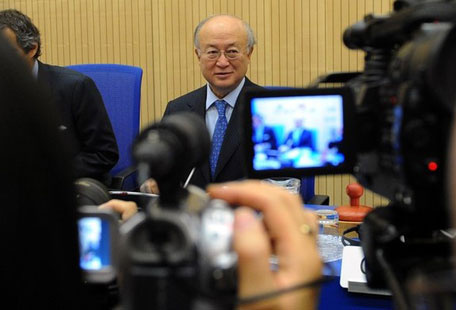Is the IAEA Moving Toward Cooperation With Iran?
Structural Agreement Waiting to be Signed by Both Sides

Sadegh Rabbani: This structural agreement had already been formed before as a modality. In this agreement, a framework will be set in which inspections and visits will be planned. In fact, it is advantageous for both sides if inspections are done in a specific framework, so that they are not repeated and there are no steps backward. This means that when an inspection or visit takes place, a new inspection will not be requested again for the same inspection site or issue. In this framework, both sides will first list the existing problems and assess them one by one, putting each problem aside as soon as it is dealt with. This process has already been used before. It seems that Iran does not want inspections to be totally free and unrestricted, rather, preferring to have them in a set framework.
ID: It seems that the issue of Parchin is at the heart of this structural agreement. Parchin has apparently been inspected two times before. Aren't these two inspections enough for IAEA concerns to be satisfied?
SR: The reason behind setting a framework is precisely to not have to repeat inspections, and to leave no room for any excuses. The IAEA can claim however, that it had made inspections before but other activities have taken place at that site since then. The IAEA can therefore consider itself rightful in this regard. But the most important issue is to reach an agreement and build trust. And the idea of setting a framework is meant to build trust. If they agree on such a framework, with the condition of not returning to old and repetitive issues, it could be considered as progress in negotiations. Visits made by the IAEA are based on reports sent by different countries or by espionage sources. These reports give the IAEA no other choice but to go through with inspections. The question that arises for Iran, then, is how much more trust must it build? Confidence building must be done once and for all. Therefore, if an agreement is reached beforehand and there are set regulations, a certain inspection can be planned based on a specific claim, and if this claim is found to be false, they can move on to the next step and not return to the same issue again. In this way, it can be considered a positive step if there is no return to old issues.
ID: In some media outlets, and even in the IAEA itself, there has been news of the destruction of some Parchin buildings where nuclear activities possibly took place. If such a thing does happen, aren't the uranium traces still detectable? If they are, why would such an issue even be considered?
SR: If nuclear activities did take place in this area, the region could not easily be cleansed and traces would remain. Therefore, destruction and cleansing and such actions would not be effective. This is because radioactive material leaves lasting effects on plants, trees, the atmosphere and in other places and on other things, and the effects are traceable for a long time. So if there was any nuclear activity, it cannot be covered up and hidden. If an inspection of this site is permitted, it could be trusted, to some extent, that no nuclear activity had taken place in the area, unless these activities are not nuclear activities, but activities related to missile research and non-nuclear explosions. In this case, such activities are no longer traceable.
ID: But this issue is not related to the IAEA, right?
SR: Based on the NPT, this issue is not related to the IAEA. But the IAEA claims that if a country tests missiles that are capable of carrying nuclear warheads, these activities are related to nuclear activities. Linking these activities to the nuclear issue follows a rationale, but it is not based on the NPT. Therefore, according to the NPT, they cannot have any demands in this regard, because every country is allowed to strengthen itself militarily. So, relating these kinds of activities to the nuclear issue is to a certain extent due to the existing mistrust.
ID: It seems that Amano, in recent discussions proposed in the Board of Governors, has spoken optimistically, saying that if this structural agreement is signed, the remaining issues are not that important and they can be agreed upon. To what extent can one rely on this optimism so that the issue between Iran and the IAEA will be resolved?
SR: Amano’s work, since the beginning of his tenure as the General Director of the IAEA, has taken on a political dimension and has been influenced by politics. It means that if Iran improves its relations with the P5+1, a positive sign will be shown to Amano and he will try to calm the situation. If he receives a negative sign, he will intensify the issue. This method is not suitable for the IAEA, an agency charged with dealing with the technical aspect of matters. Just as there is pressure on Iran, there is also pressure on the West, i.e. about issues related to the US elections and Israel and other issues. Therefore, this optimism can be interpreted in such a way that, because there is pressure being exerted on both sides, they intend to move past this issue. Even based on the claims of US intelligent services, Iran is no longer seeking a nuclear bomb; hence, considering their own claims, no more pressure should be put on Iran. From this point of view, there is relative optimism.

